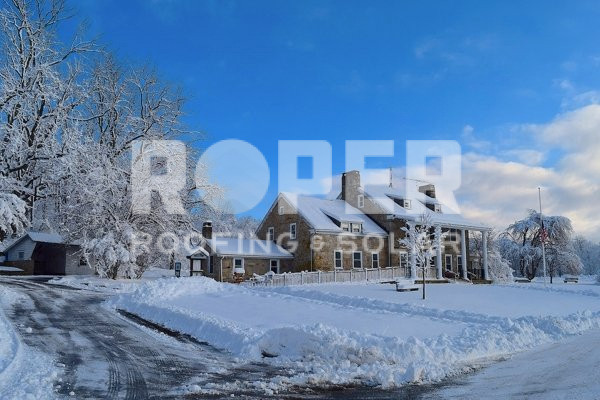
As long-time experienced professional roofers, we humbly admit that cramming and crunches are common, especially before winter arrives. For many Littleton, CO homeowners, winter is the culmination of all roofing repair and replacement errors because we can attest that it's virtually impossible to roof under such strenuous situations. With so much debris and snow falling around, workplace management is difficult. Furthermore, snowstorm risks and sub-zero temperatures are always apparent.
However, winter roofing is only nearly impossible. If an emergency requires it, your dependable Littleton, CO roofers will answer your call to prevent roofing material or foundation collapse. On the other hand, it will require additional gear and extra planning to ensure your and our safety throughout the process. Additionally, no roofer is willing to accomplish any project if it risks theirs or their team's life. We and other dependable roofers in Littleton, CO, will make it clear before starting the contract.
Truthfully, you can install any roofing material of your choice during winter. However, a great practice is to use roofers with clear experience and certification in handling the roofing materials you've chosen.
IKO has a great list of precautions roofers take if they do need to install, repair, or replace a roof during the most brutal season for roofing. Read more about it below.
Winter Roofing Worker Safety
There are ways to carefully and safely take advantage of the business boosting benefits of work year-round, by learning how to minimize the drawbacks of winter weather. But, never under any circumstances put your work before personal safety. Finishing a job is never worth risking a life – be sure to respect the limits Mother Nature may impose. Here are some unique cold weather threats to be aware of when doing winter roof work.
Snow and Ice Make Surfaces Extra Slippery
Roof surfaces can become slick and slippery thanks to snow, ice, or frost. That means roofers must take extra precautions when working on a roof to wear roof-fall protection equipment, work methodically and carefully, and wear high-performing gear (like winter-rated work boots) which have been tested for wet, cold conditions.
A common winter consideration is snow removal or de-icing of the roof surface after a storm. This requires extra time, extra caution, and different equipment on which you or your fellow workers need to be trained, along with increased monitoring while the removal is taking place.After all that, the Asphalt Roofing Manufacturers Association (ARMA) warns, even on a freshly cleared roof, there may be nearly invisible ice or frost build-up on the roof or deck surface, which can make work extremely hazardous. It is advisable to wait until the roof surface is free of ice and frost for safer roof application.
Ensure that the attic space is adequately ventilated. Often, what appears to be a roof leak is actually condensation of moist interior air drifting up into a cold, improperly ventilated attic.
Snow Can Disguise Risks Such as Skylights, Debris or Materials
Pay close attention to where you work and walk to ensure you don’t accidentally step on or fall through a skylight, or trip over materials hidden under the accumulation. Clear surfaces before working and pay close attention while disposing of snow and ice. (Continued)
Roper Roofing is Littleton's best roofing team possessing more than a decade of experience providing top-notch services. Contact us today to learn more about everything that we can achieve with you.